In the footsteps of the crusaders. Part of 1. Front in the Holy Land
On the actions of the British cavalry in this theater of operations - who saw so many armies of antiquity and remembered the march of the crusaders - there is a wonderful work of Sergei Nikolaevich Sevryugov “The equestrian corps on the mountain-desert theater. Actions of the British "Equestrian Corps of the Desert" in Sinai, Palestine, Transjordan and Syria in the 1917 – 1918 years. ” M., 1941., In which the specialist examines the actions of the British Desert Equestrian Corps in the mountains of Palestine, Syria, Trans-Jordan and the Sinai desert in 1914 – 1918, formulating interesting conclusions about the specifics of the use of cavalry formations in a mountainous desert theater setting. We will try to see: what strategic tasks the British cavalry was able to solve during the events in question, attracting authoritative opinions of Soviet military experts, described in the pages of works that are little known (or unknown) to the modern reader.
Speaking about the use of cavalry for strategic purposes, it should be noted that the major offensive operations of the First World War in its positional period in most cases did not lead to the attainment of freedom of maneuver to defeat the bulk of the enemy troops. The defender often managed to regroup, pull up his untouched reserves to the front of the breakthrough, and as a result, the blow inflicted by even very large forces did not receive proper development. Such operations for the most part ended only with the deflection of the enemy’s defenses, and, as a rule, they did not succeed in reaching the operational space, finding freedom of maneuver.
The richest experience in conducting offensive operations showed that concentrating superior forces and assets on one or another sector of the front is not enough to defeat the enemy on an operational scale. For the destruction of the enemy, the coordinated use of various types of troops is necessary - with the aim of simultaneously defeating the entire depth of the enemy location, and the coordinated actions of the attack groups advancing on different sectors of the front.
In the presence of a solid defensive front, the defeat of the bulk of the enemy troops is achieved by breaking through the front in one or several areas and developing a breakthrough with powerful and fairly mobile branches of troops - and this breakthrough should be completed with strikes against the main forces of the enemy from the front and rear to surround and destroy them . The development of a breakthrough, that is, the introduction into the breakthrough of a sufficiently powerful and mobile echelon of large equestrian and independent armored formations, becomes a necessary element of an offensive operation.
Attempts to use cavalry for the development of a breakthrough in the Great War were carried out, as is known, in many offensive operations. But most of these attempts, as a rule, did not bring the expected result.
In the East European theater of operations, A. A. Brusilov undertook a serious attempt to develop a breakthrough with the help of cavalry masses in the offensive operation of the South-Western Front in 1916. The strong Russian cavalry (6 cavalry divisions) could not successfully complete the operation due to lack of proper interaction with the rest of the troops of the front and adverse conditions of the area.
In the West European theater of war such attempts were carried out during operations near Cambrai in November 1917, Soissons and Amiens in July and August 1918, with the same (or even smaller) result.
The main reasons for failures in the use of cavalry for the development of success, especially in the West European theater, were primarily that the attacker could not ensure the release of cavalry to the operational space. The defender almost always managed to bring operational reserves and create a new solid firing front, which the cavalry could not overcome on its own. The development of success became impossible. Many general staffs even came to the conclusion that the cavalry was no longer a branch of the military capable of solving the tasks of developing success. This view of the importance of cavalry led to the fact that in 1918, the French cavalry was significantly weakened: the 4 cavalry divisions were disbanded, and many of the remaining occupied defensive positions along with infantry.
Meanwhile, even in the conditions of the West European theater of war, there were cases when the situation favored the use of large cavalry forces to develop the success of the offensive. In May, the 1918 was broken through the French front at Chemin de Dame. The flow of German troops crossed the river. En, reached the forest Villers-Kotre. To close the breach, the French 1 Cavalry Corps was used, which stopped the advance of the advanced German units - at Dorman on r. Marne. 2 Cavalry Corps, on time arriving at p. Urk, detained the Germans, who were advancing south of the Viller-Cotre forest, than consolidated the position of the French in the area. The offensive of the German troops was delayed primarily by the French cavalry — and the Germans had no powerful cavalry to develop a breakthrough.
On July 15, the Germans are making a final effort south of the Marne, in the direction of Epernay. The offensive ends in failure: at the moment when the Germans seemed to triumph, their cavalry, fortunately for the French, did not appear - although the allies were wary of this. The German cavalry was entirely focused on the Eastern Front. Later, the German command repeatedly expressed bitter regret at the absence of its cavalry on the Western front, indispensable for the development of success in the 1918 campaign of the year.
Almost the only striking positive example of cavalry use in the world war for the development of a breakthrough is the British offensive against the Turkish-German forces in Palestine and in Syria in September 1918. The cavalry played a crucial, strategic role - even though its actions were carried out in a peculiar mountain theater.
In the area of operation - from the Mediterranean coast to the river. Jordan - the rugged mountains of the Judean Range are located with a limited number of accessible paths. In the northwestern part of the region, the Samaria range separates the coastal Saronsky valley from the Ezdraelon plain, convenient for the actions of all the armed forces. The only railway from Damascus, connecting the Turkish 7 and 8 armies to Constantinople, passed through this valley.
British cavalry in the East. Fighters of the Imperial Camel Corps. From left to right: Australian, Englishman, New Zealander, Indian.
The Turkish 8, 7, and 4 armies, commanded by German General O. Lyman von Sanders (80000 man and 500 guns), occupied the front from Arsuf, on the Mediterranean coast, through the coastal valley, the Judean ridge, valley R. Jordan and further along the spurs of the mountains east of the Dead Sea. The armies occupied the front: 8-I - the seaside direction, 7-I - the area of Nabulus, 4-I - between pp. Jordan and Amman. The strength of the Turkish armies to the September offensive of the British was significantly weakened due to the adventuristic policy of Enver Pasha, the commander-in-chief of the Turkish armed forces, who, seeking to conquer Armenia and Iranian Azerbaijan, transferred part of the troops from Syria to the Caucasus. English demonstrations in the valley. Jordan was misled by the Turkish command, which focused all its attention on this valley - while the coastal part of the Turkish front (the most dangerous direction) was occupied by small forces.
The overall situation in the Palestinian theater.
In the coastal valley, in the direction of the main attack of the British, the defense was occupied by the 8 army, which had three resistance bands.
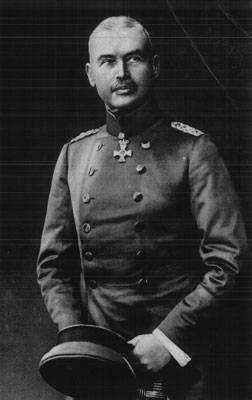
O. Lyman von Sanders.
The first lane, the equipment of which began at the very beginning of 1918, consisted of a series of strong points, interconnected by a network of trenches thickly braided with barbed wire. Closer to the seashore, the 22 Army Corps was stationed (2 infantry divisions), then, on the foothills of the Judean Ridge, the 19 Infantry Division defended, in the mountains the German Asian Corps and finally the 16 Infantry Division.
The second lane passed along the north bank of the r. Nahr El Falik, who represented a serious obstacle; it was occupied by the 46 Infantry Division.
The third lane, which took place in 30 km north of the first, was occupied with only small sentries.
The divisions defending the first lane had two regiments in the first echelon and one each in the second. The combat strength of the infantry divisions occupying the Saronsky Valley was determined by 3000 bayonets, 150 machine guns, 94 guns, which, with a shell front width of about 13 km, was to ensure sufficient fire density and defense stability.
The British, after the unsuccessful offensive in the spring of 1918, detained by counterstrikes of the Turkish troops, for 4 months, intensively prepared for a new offensive. The English forces by this time totaled up the 18 - 19 divisions.
The British achieved in Palestine a general advantage in the number of groups - about 1,5 times in the infantry, 3 times in the cavalry, had absolute superiority in aviation and slight superiority in artillery. In the direction of the main attack, they created decisive superiority - both in manpower and in technology.
The purpose of the British offensive was the encirclement and destruction of the Turkish-German armies in the massifs of the Judean Range and the capture of Palestine and Syria.
The plan commander General E. Allenby, was as follows.
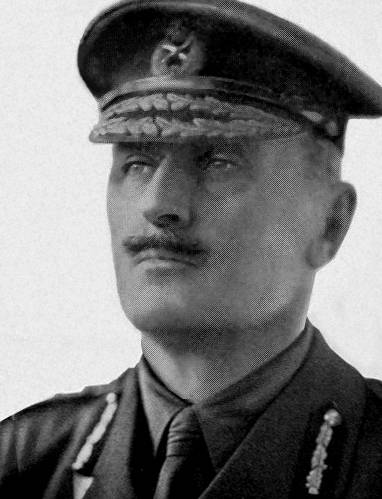
E. Allenby.
The main blow, with the assistance of forces fleetapplied on the coastal site; on the rest of the front, Turkish-German troops are fettered. A blow to the northeast, the 8th army is thrown into the mountains, and the coastal plain is freed for the actions of the cavalry. The horse corps is thrown into the breakthrough created in the coastal valley, and moves north through the Samaria Range to the Ezrahelon Valley - to capture the exits from the Judean Mountains. From the rear, he was supposed to ensure the destruction of the bulk of the enemy troops south and southeast of this valley.
British plan.
The operational plan was as follows:
1) a demonstration in the Jordan Valley to deceive the Turks in assessing the direction of the main attack of the British troops; 2) with the attack of Faisal’s Arab troops from the Azrak area onto the Amman-Damascus railway and delivering the main attack, along with the fleet of the left flank, along the coast of the Mediterranean Sea, go to the enemy’s posts, cutting it off from Damascus (a serious Turkish base and connecting link with Constantinople and Germany), surround and crush; 3) to organize the offensive of the British forces 3 groups: the first is attacking Amman, the second - on Derat, the third - on Kuneytra; 4) the task is assigned to the cavalry - to hit the rear in the general direction of El - Fulce - Saman.
The immediate task of the cavalry was to capture the rear lines of the defense of the 8 Army, and the next task was to capture Jenin, El Afule, Nazareth and Beyzan. However, the cavalry was not toughly bound by the lines of action in the depth of the enemy's position - she had to cut off the enemy's withdrawal paths where he would retreat with her main forces.
British cavalry in the East. Left: Lieutenant of the Imperial Camel Corps, 1915. Right: Sergeant-Major of the 13 Hussars, Mesopotamia 1918.
The start of the operation was scheduled for September 19 1918.
The preparation of the British for an offensive began in the spring of 1918. It consisted mainly in a systematic struggle for air supremacy (which led to a sharp reduction in the number of German aircraft), and in operational disinformation aimed at creating the enemy’s misconception about preparing an offensive coastal zone, and in the valley of the river. Jordan. In order to attract the attention of the enemy’s command to the Jordan Valley, the British, in addition to spreading false rumors of an impending offensive, prepared and placed horse stocks on the sham konovazyah to 15000, made a massive purchase of food and fodder, prepared camps for troops and premises for staffs. Performing a series of demonstrations in the Jordan Valley for the purpose of allegedly concentrating the main forces, they concentrate large infantry and cavalry forces in the orange and olive groves in the Ramle region. In the end, they managed to convince in this false opinion not only German intelligence, but also their troops, who considered the preparation of an offensive in the valley of the r. Jordan.
Prior to the beginning of the offensive, the Desert Equestrian Corps was located in a waiting area - in 25 - 30 km southeast of the breakthrough site. The starting position for advancement to the breakthrough was taken on the night before the offensive: the 4 Cavalry Division for the 7 Infantry Division, the 5 Cavalry Division for the 60 Infantry Division, Australian Mounted Division in the second echelon, in the second echelon, in the second echelon, in the second echelon, in the second echelon, in the second echelon, in the second echelon, in the second echelon, in the second division. 4 Cavalry Division. The horse artillery still 17 September was pushed to the firing positions to the forefront - to participate in general artillery training.
Australian cavalrymen.
On the eve of the offensive, on September 17, Arab troops raided the southern part of the Damascus railway line and destroyed it in the Derat-Amman section.
The ending should ...
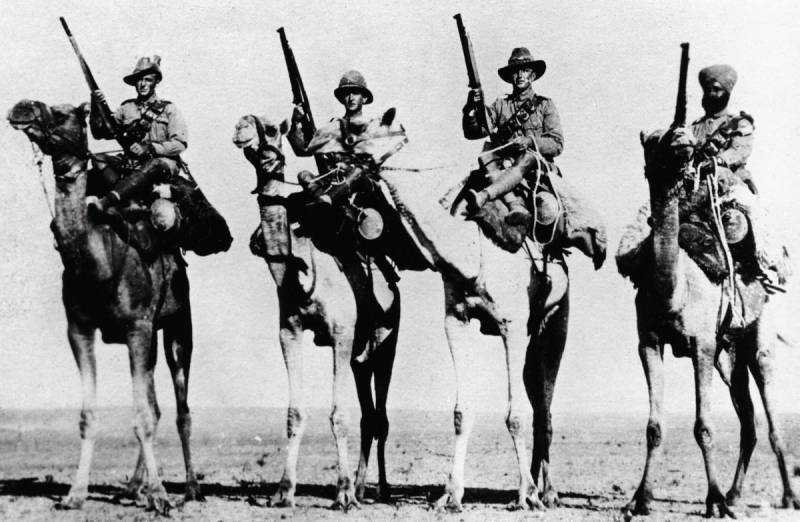
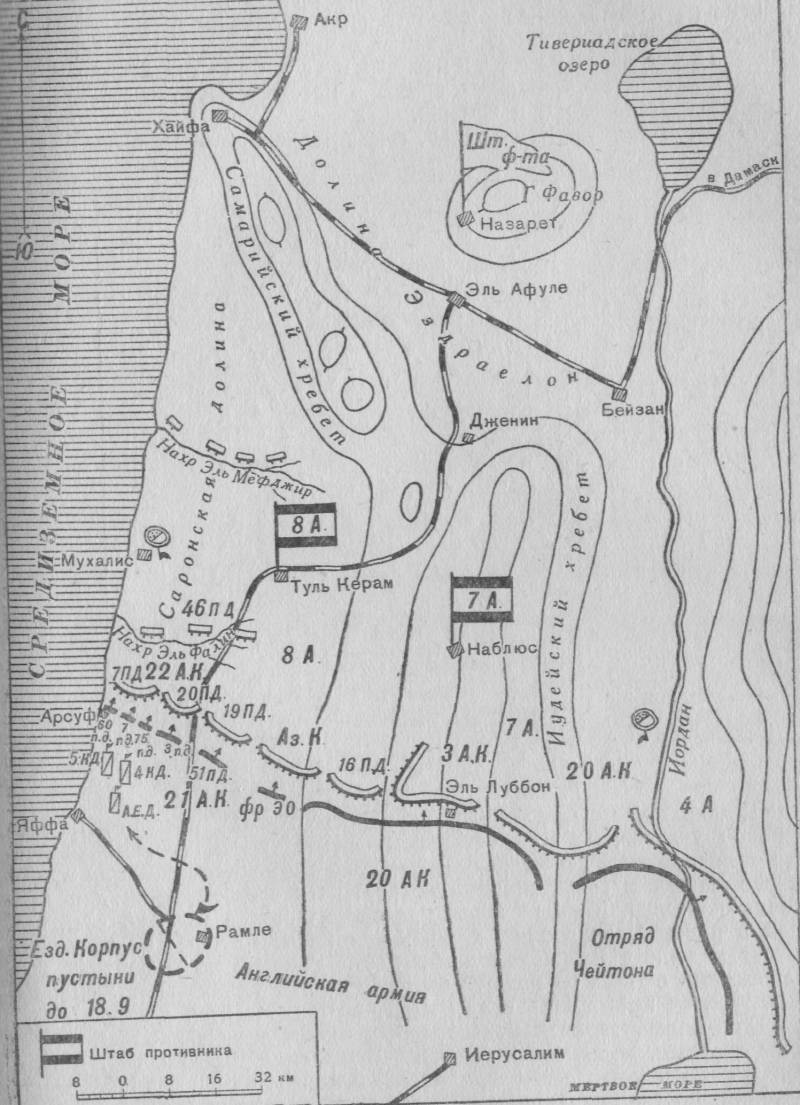
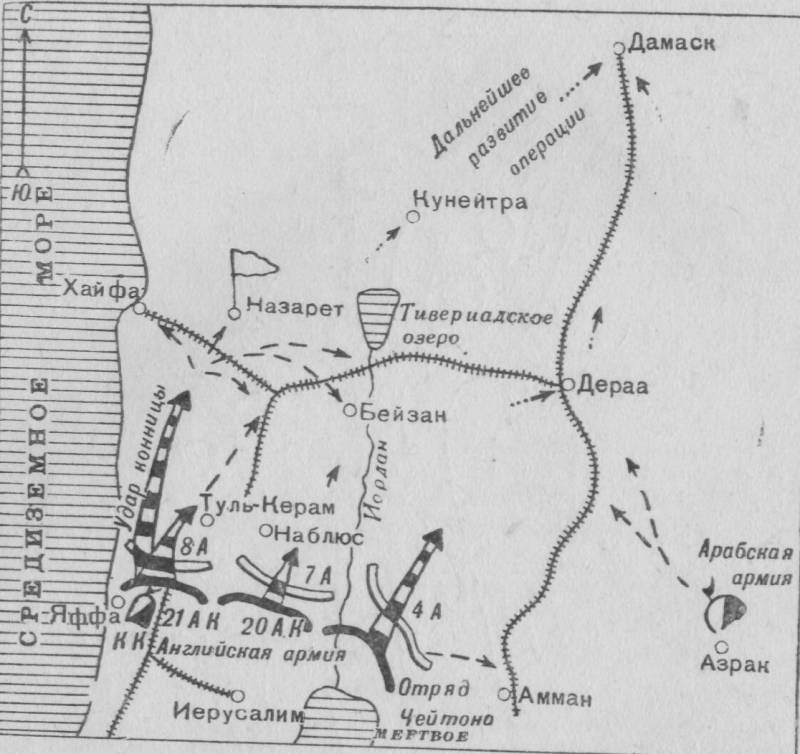
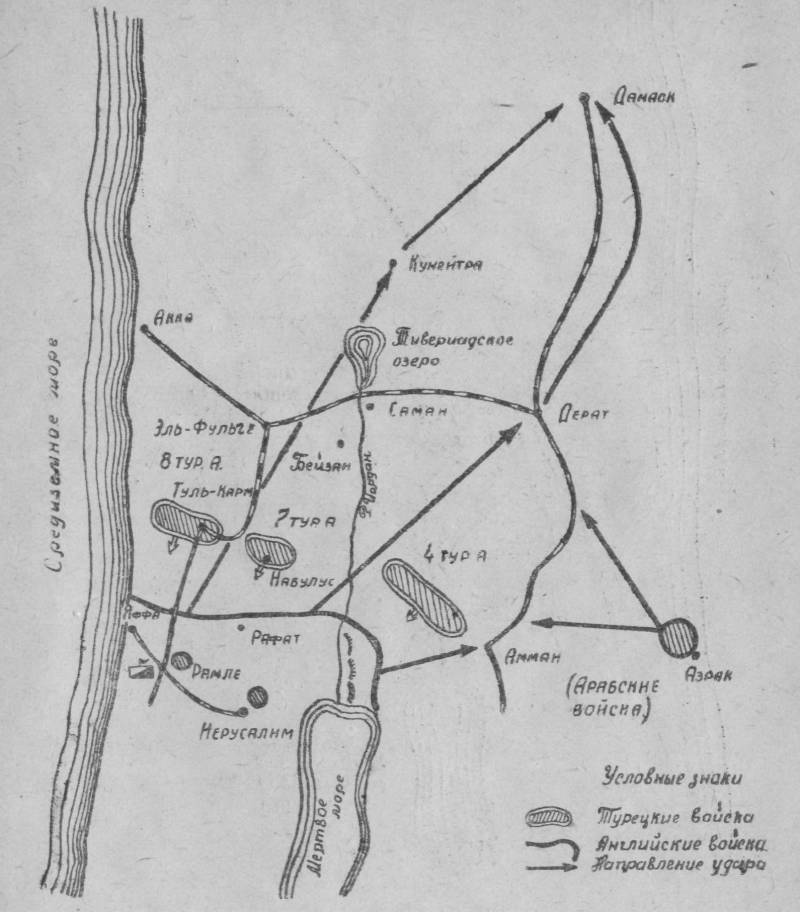
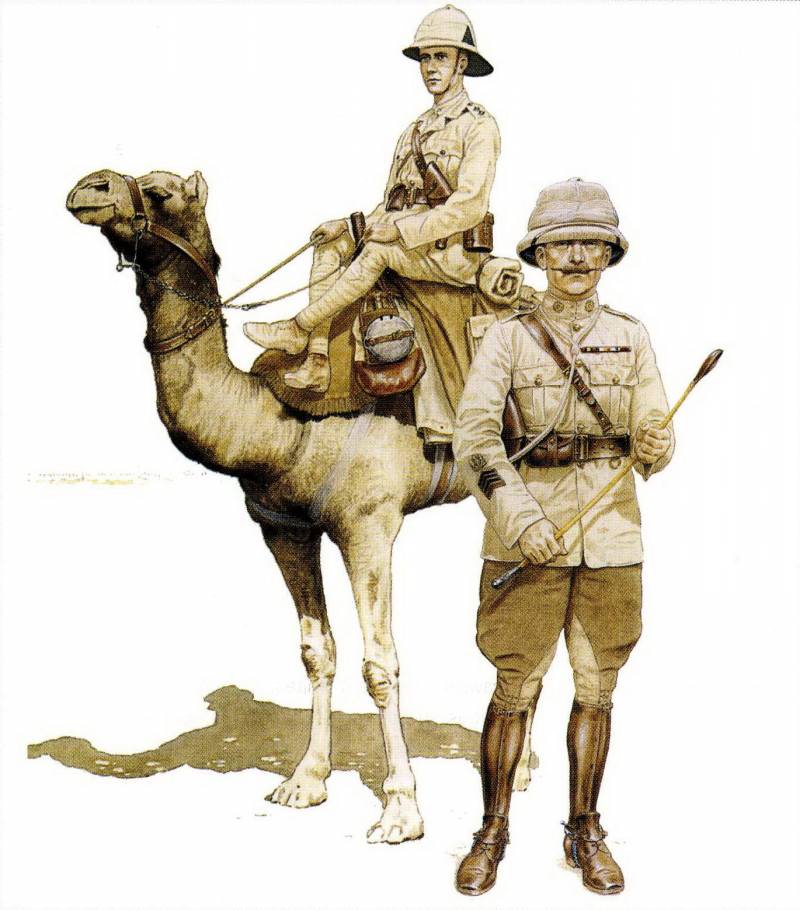
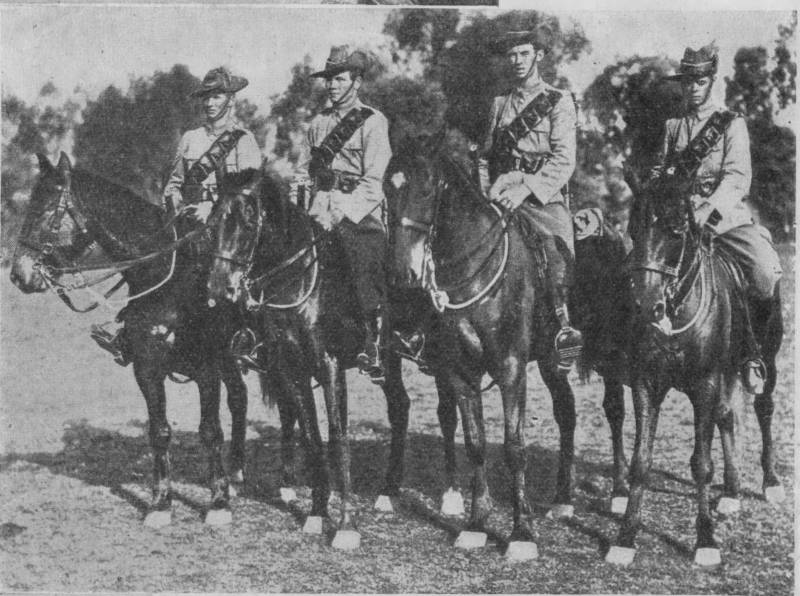
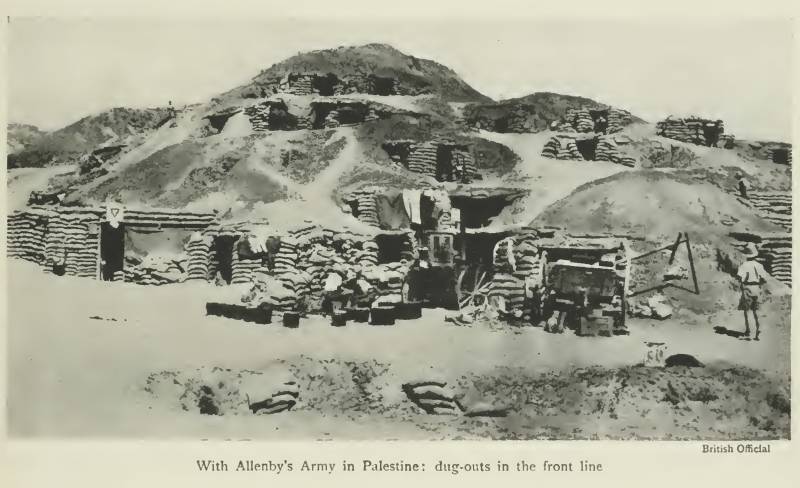
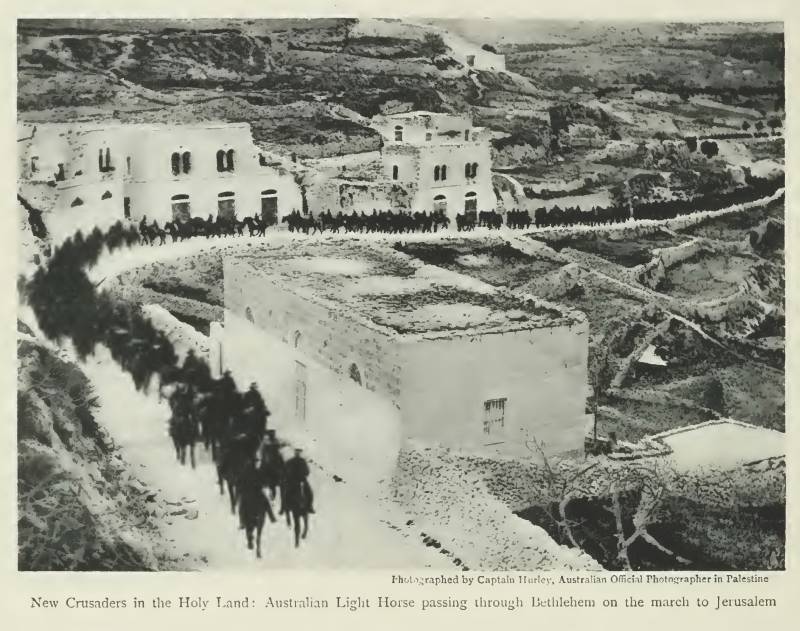
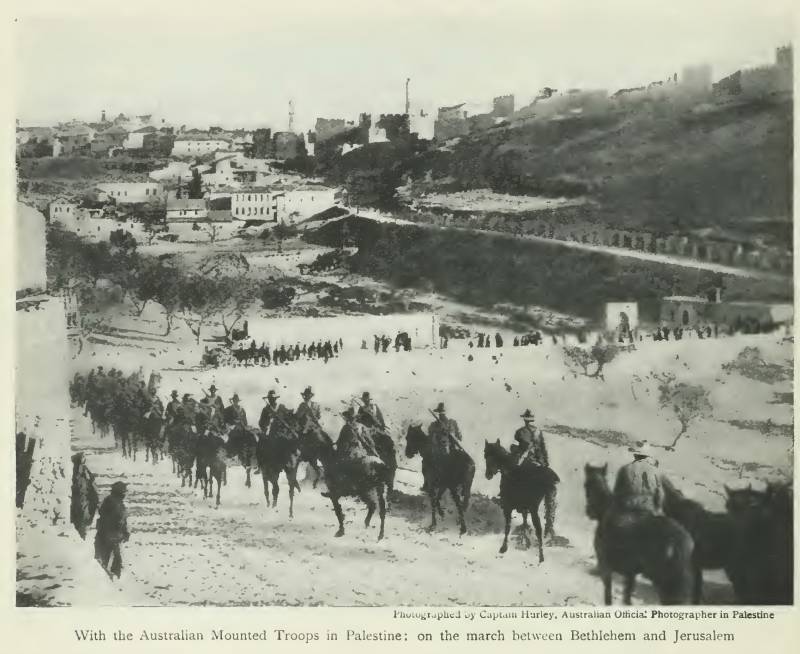
Information